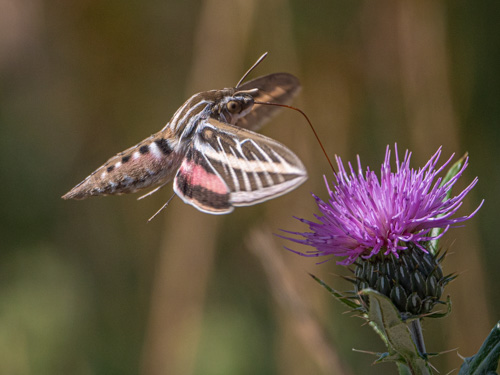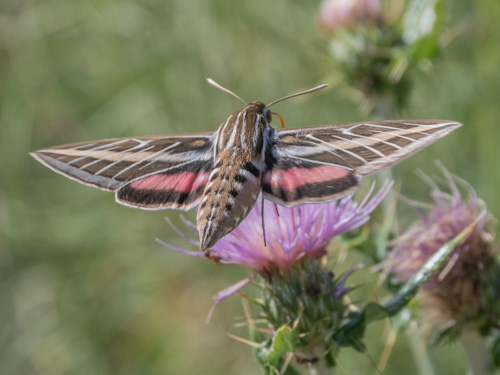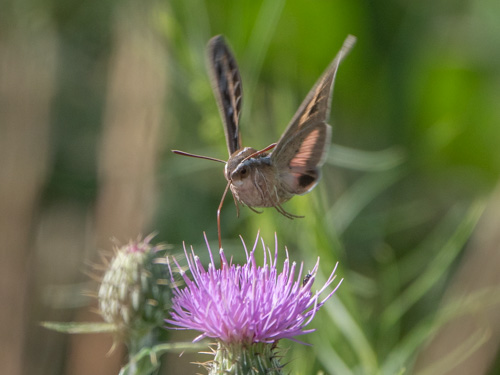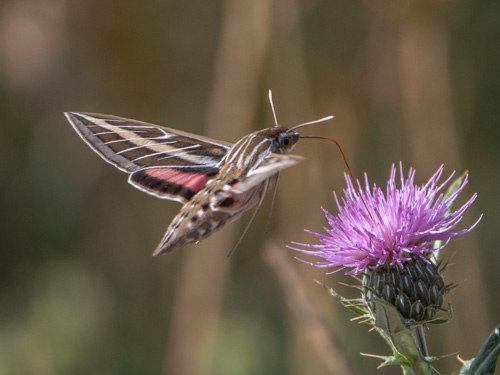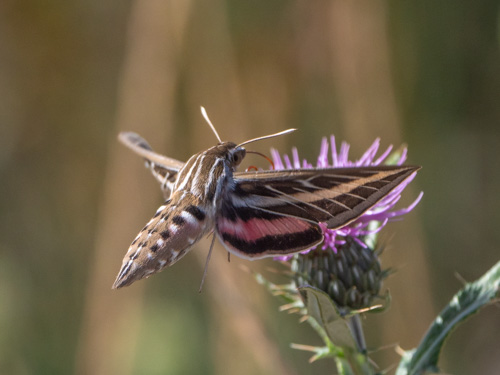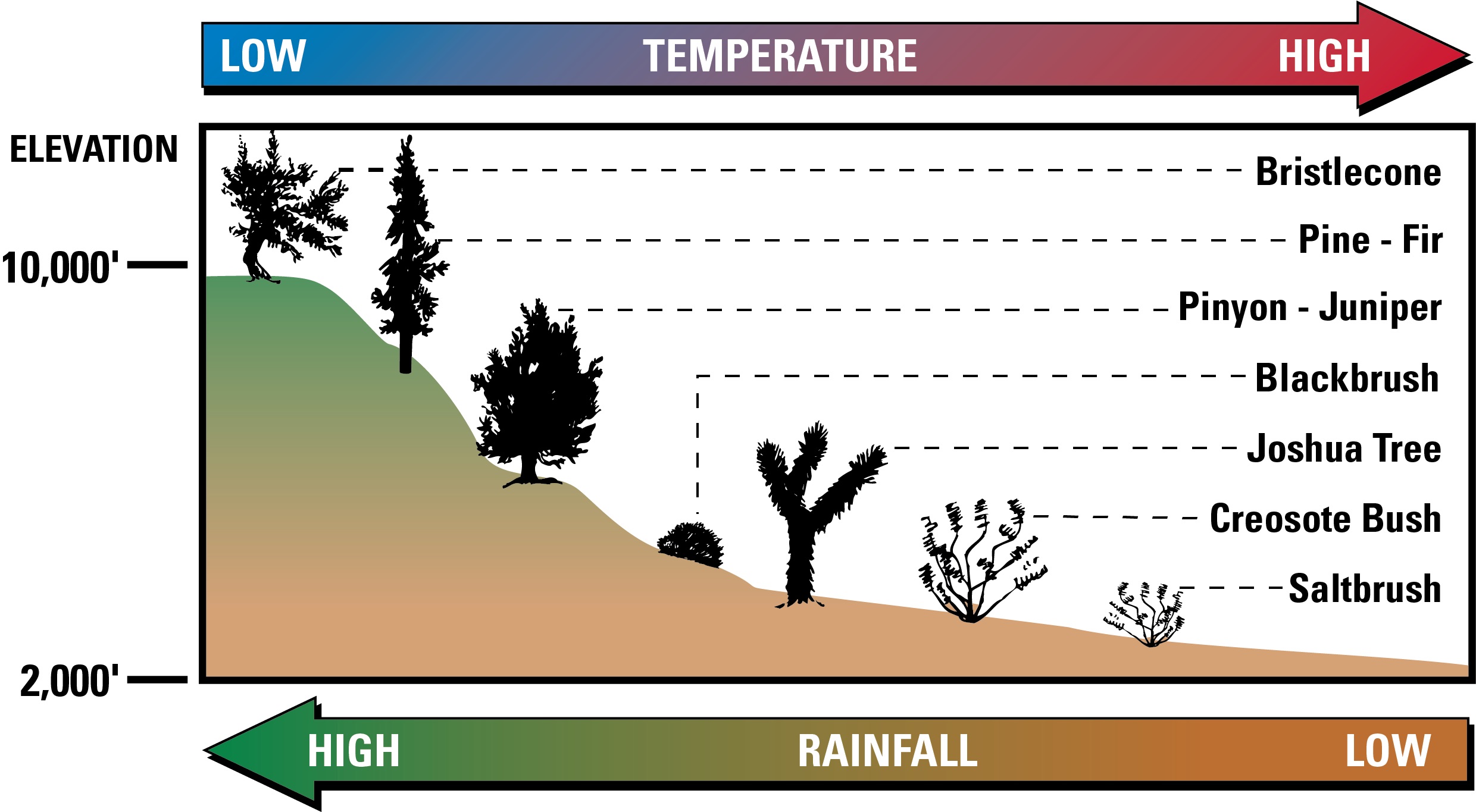Hyles lineata
White-lined Sphinx
Introduction:
The forewing is dark brown with a tan stripe which extends from the base to the apex. There are also white lines that cover the veins. The black hindwing has a broad pink median band. It has a wingspan of 2 to 3 inches. This moth is large and has a stout furry body. The dorsal hind region is crossed by six distinct white stripes and similar striping patterns on the wings. The hindwings are black with a thick, red-pink stripe in the middle.
Life Cycle: Larvae overwinter and can emerge between February and November, at which point they begin to feed on a variety of host plants. Caterpillars are known to be ardent eaters. When preparing to transition into the pupal stage, caterpillars dig shallow burrows in the ground where they then stay for 2 to 3 weeks, at which point they emerge as adults. As they get closer to pupating, they will wiggle up closer to the surface which makes it easier to emerge. host plants, and they can eat entire plants, cover entire roadways and form huge slick masses as they go.
Size 2-3 inch (5-7.5 cm)
Sexual Dimorphism:
Metamorphosis: complete (egg, larva, pupa, adult)
